► Alfa’s first EV driven in the UK
► Built on the e-CMP2 platform
► Sits under the Tonale in size
This is the Alfa Romeo Junior, the brand’s first EV and one that’ll begin a new chapter for the brand from Milan. After this it’s all electric, with the Stelvio SUV going full-BEV in 2025 before the Giulia goes the way of lithium-ion in 2026.
As you’d expect from Stellantis, it’s based on the same platform as several other cars; the Junior uses the e-CMP2 modular architecture as the Jeep Avenger, Fiat 600e and Vauxhall Mokka to name a few. However, Alfa is confident it’s done enough both on the exterior, interior and everywhere in between to make the Junior an altogether different proposition.

It’ll come with three powertrains; the ‘entry-level’ electric car reviewed here, a faster EV called the Veloce and a newly announced hybrid version to follow in the UK next year. So does it live up to the Alfa badge in standard, EV trim? We drove it on a mixture of roads in the UK to find out.
At a glance
Pros: Great looks, nice ride, competitive range
Cons: Brakes aren’t amazing, cabin feels cheaper than you’d expect
What’s new?
The Junior is an all-new electric B-segment SUV, but it’s a spiritual successor to smaller Alfas like the Mito and the Giulietta. It isn’t here for brand building or nostalgia alone; alongside the Tonale, Stelvio and Giulia, the Junior will give Alfa 60% coverage of the car market, and see it tap into one of the fastest-growing segments.
Despite the new direction and market, it should look a little familiar. Centro Stile has heavily drawn on the look of Alfas past and present – most notably the old Giulia TZ and the 33 Stradale if you’re particularly optimistic. Whatever the DNA, it’s a cool-looking thing in person. Measuring 4.17m long, 1.5m high and 1.78m wide, it has the same footprint as its platform siblings, but it carries itself in an altogether more premium way.
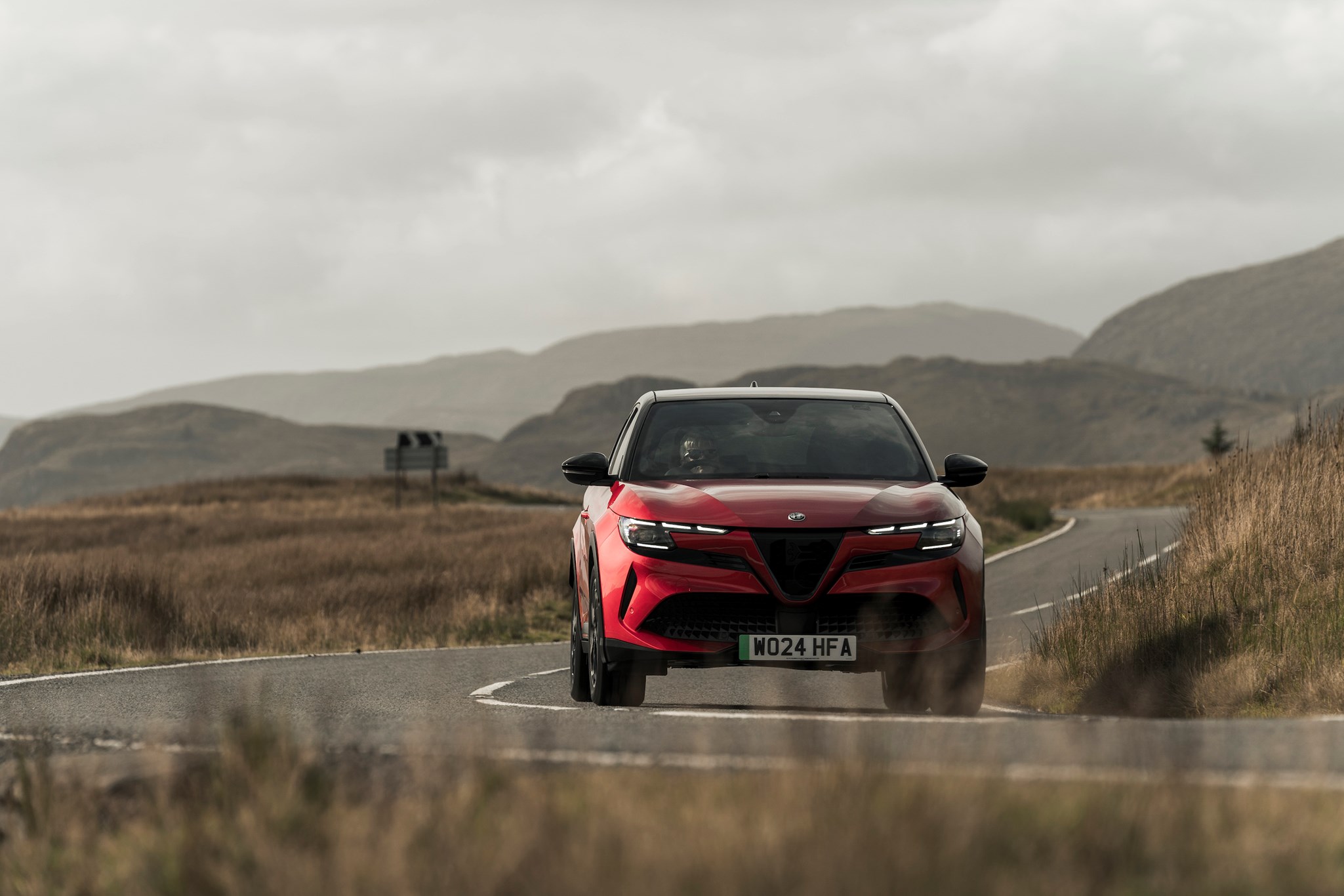
There’s a Scudetto shield at the front, headlights that riff off the same shape as the rest of the range and a cut-off rear that’s both stylish and, we’re told, massively efficient through the air. Central numberplate aside (side-mounted is not a thing now, sadly) this ticks the Alfa Romeo boxes for me.
What are the specs?
The Junior Elettrica will come with two electric powertrains: a high-powered Veloce edition with 278bhp and an entry-level one with 154bhp. Combined with a 54kWh battery (fitted to both models), the standard Junior EV gets 0-62mph time of 9.0 seconds, though as you’d expect it’s quick to hit 30mph. For reference, the top dog Veloce makes it to 62mph in a more urgent 5.9 seconds.
Range is quoted at a punchy 255 miles, with fast-charging from 10-80% taking just 30 minutes if the charger is potent enough.
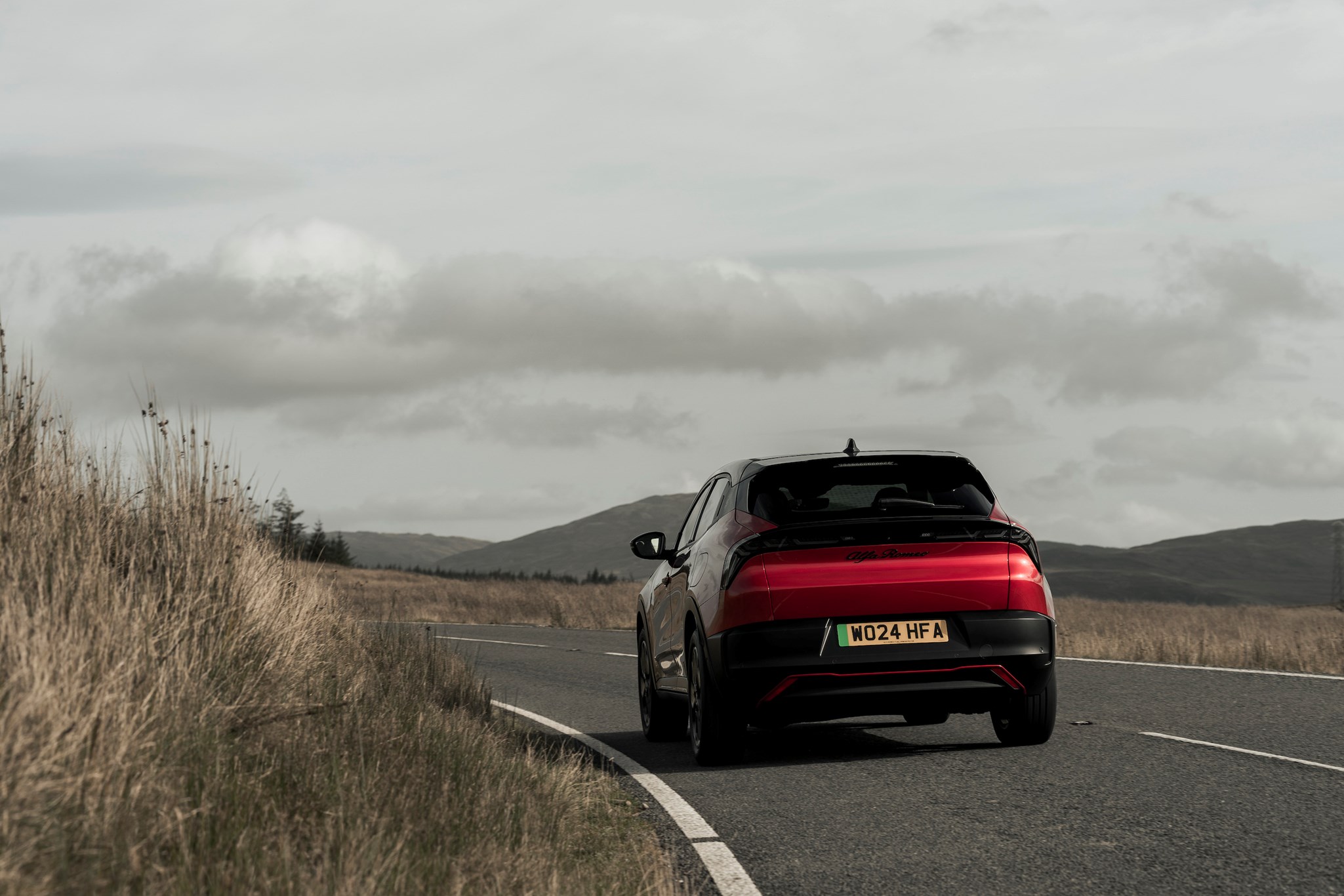
How does it drive?
The Alfa Romeo Junior is designed to offer the driving enjoyment you’d expect from an Alfa in a compact EV, and it succeeds for the most part. The ride is refined, with the Junior able to handle most of the bumps on our test route. Potholes did make it to the cabin as you’d expect, but not with teeth-shattering violence.
Steering isn’t as mercury-quick nor as precise as something like the Giulia or even the Tonale, but it’s certainly the most engaging we’ve experienced on this platform so far. Feed the Junior into a corner, and you’ll also find that its comfortable ride doesn’t come at the expense of dynamics either. While the Junior does move and roll, it’s compliant enough to hustle on more demanding roads. Think of the steering and body control as a tightened, toned version of that in the Jeep Avenger EV, and you’re pretty much there.
At 154bhp, power is sufficient in town – especially to 30mph – and on country roads there’s still fun to be had. There’s no hint of understeer – not because of a clever diff like the Veloce, but because of its modest bhp – and it feels relatively nimble too. At 1560kg it’s impressively light for an EV, and you feel that lack of heft in the corners.

The key issue with the Junior comes with the left pedal; the brakes have a lack of feel and action on the top end, with most of the braking force coming on the last half or third of the pedal. It’s because the top half uses regeneration force alone, the bottom half uses conventional brakes, and the two aren’t blended together that well.
Brake for a corner on a B-road and the Alfa doesn’t initially slow down as quickly as you’d hope. As a result, you find yourself pushing ever harder on the pedal (further down to the more powerful friction braking) as the corner rushes toward you. It’s something we’ve seen on several EVs, including the Jeep Avenger this car shares a platform with, but it’s more noticeable here. That’s partly because the superior handling of the Alfa shows them up.
In B-mode, with higher regeneration, the switchover is less pronounced. In normal mode you’ll get used to it – but it’s a blot on the Alfa’s driving experience.
What about the interior?
Alfa’s Centro Stile design team has done a great job with the exterior of the car, and design-wise, the interior is equally impressive. The driver benefits from a ‘telescopic’ cockpit – an Alfa signature – with a 10.25-inch screen. But the rest of the cabin is interesting too. Air vents sit above a 10.25-inch TFT touchscreen which is angled toward the driver, and below it you’ll find switches for major functions such as the air-conditioning. You can play Stellantis bingo if you like, and work out where else you’ve seen the various knobs and buttons, but I think they work well here.
However, the interior is let down by the feel and finish of some of the materials. Cheaper, hard plastics are used in crucial places like the door cards and above the vents, and they betray the Alfa’s competitive pricing. The seats are basic but fine – the lack of premium materials is more noticable, though.
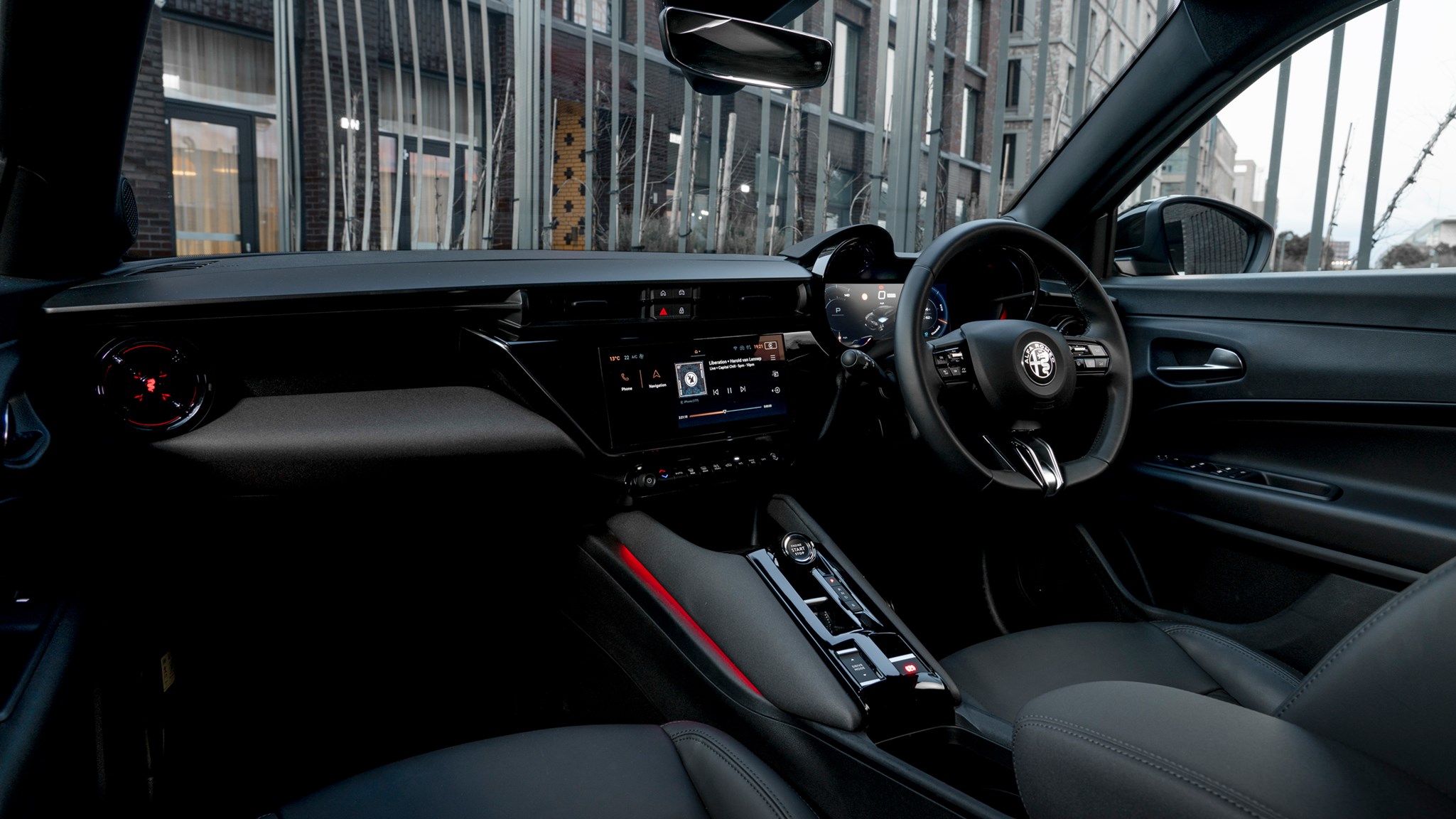
Swathes of Alcantara improve things in the Veloce trim, but in the standard car the cabin feels like a missed opportunity.
Despite the relatively disappointing feel, the cabin does at least include all the usual bits of tech, and the infotainment system was relatively easy to operate. The Junior comes with both Apple CarPlay and Android Auto functionality, though, so you may never come across the in-house software.
At the back, you’ll find a competitive 400-litre boot, with the Speciale trim giving it hands-free functionality.
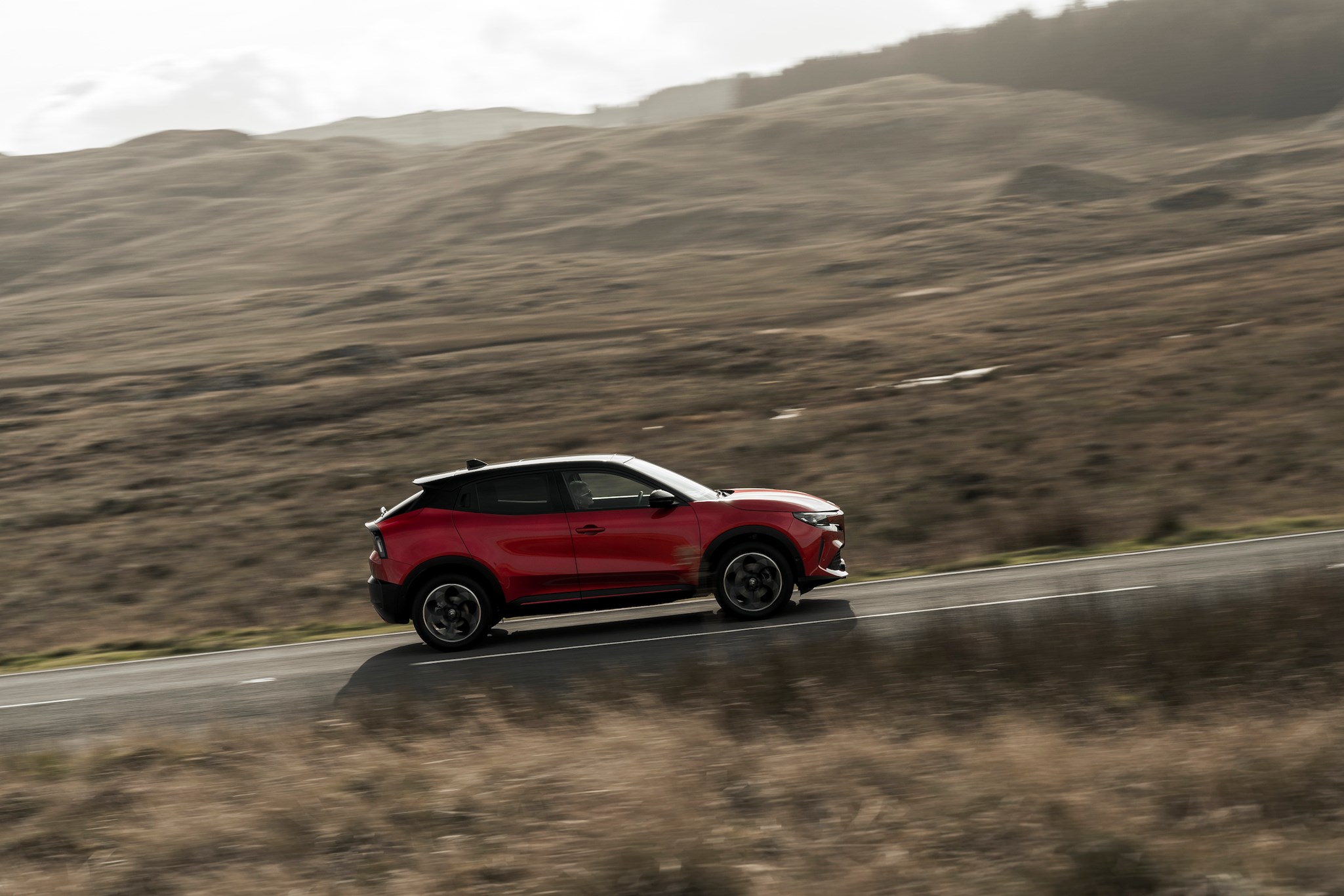
Before you buy
The Alfa Romeo electric comes in three tiers: the bass Elettrica model starts at £33,895, the Speciale comes in at £35,695 while the aforementioned Veloce tips the scales at £42,295. The Speciale is the top trim of the base EV powertrain, and the extra two-ish grand gets you tinted rear windows, six speakers rather than four and nicer seats. There’s also a reversing camera and a leather steering wheel. Crucially the Speciale comes with 11kW rather than 7kW onboard charging for slightly faster top-ups. Tech-wise you get lane-keeping and traffic jam assistance with the Speciale, too.
You can read more about the Veloce here, but in addition to the increase in power and clever limited-slip-differential, the top Junior also sets itself apart with a slightly plusher interior among other bits.
Of course, the Junior also faces competition from other cars on the e-CMP2 platform such as the Avenger. It looks better than the Jeep but suffers more from cheaper materials than the Avenger. It almost feels as though the Avenger was designed with affordable materials in mind, whereas their use came as a shock to Alfa’s design team.
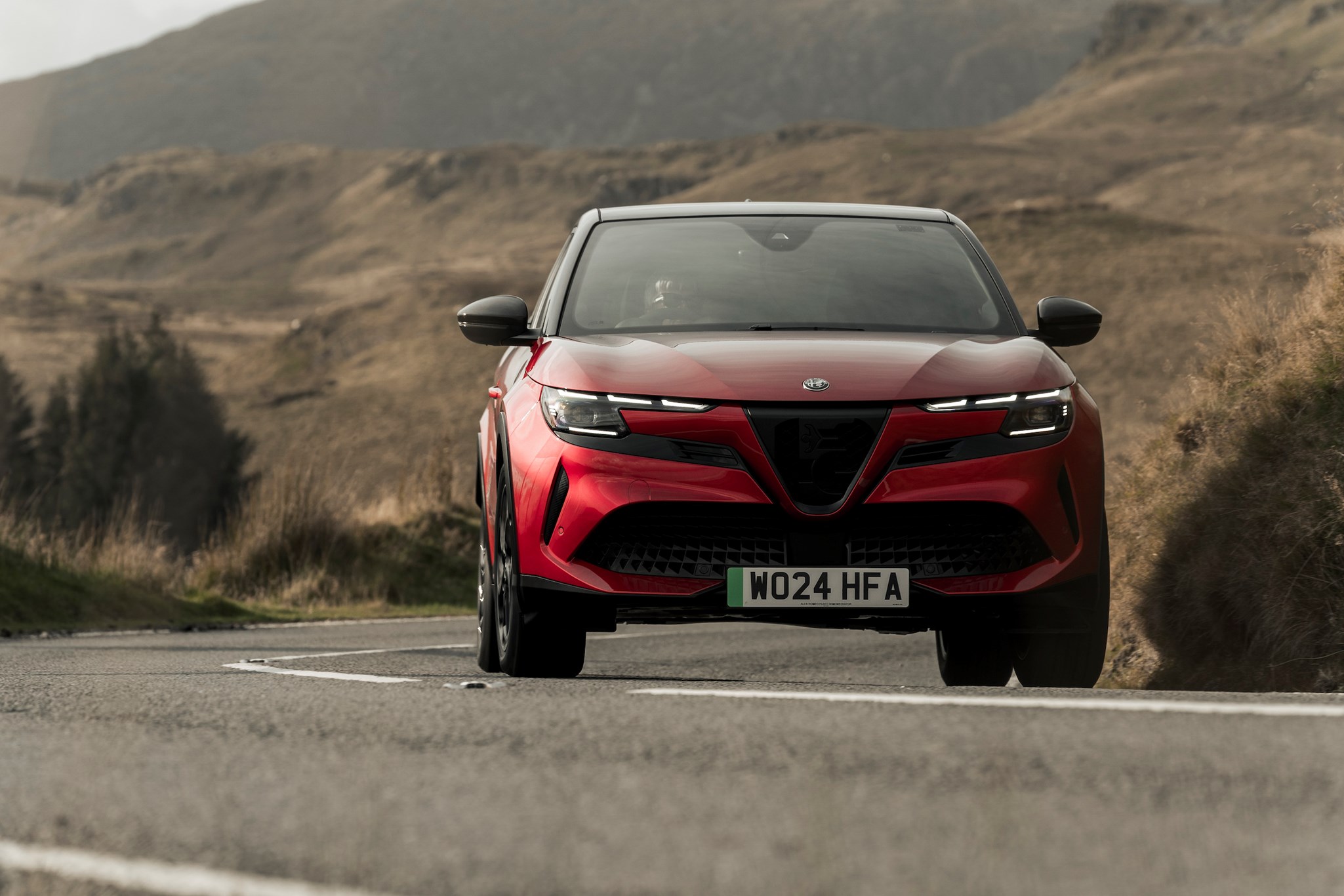
Verdict
The Alfa Romeo Junior is a stylish, compact EV that’ll almost certainly do well in the increasingly crowded B-segment. It’s arguably better-looking than its rivals and has a spec sheet that keeps it competitive. The inclusion of a heat pump across the range is also a sensible decision and will see real-world benefits for customers.
Still, it feels like a missed opportunity – at least with this powertrain and trim. It changes direction well enough, with a good ride and nimble (for an EV) dynamics. Power is sufficient for this part of the market, too – and the quicker Veloce caters for the petrolheads or electroheads that want more oomph. However in this powertrain, the driving experience is let down by brakes that aren’t fun to use when pushing on. Although fine around town and less noticeable in other cars on the same platform, they feel like a weakest link in an otherwise well-sorted car.
In the same way, the Alfa’s stylish and premium-looking interior uses materials which feel out of a place on a car that reaches for a more premium look. The Alcantara in the Veloce feels more the part and suits the design more. Starting at just below £34k, the entry-level Alfa EV matches the Jeep Avenger for price, though it’d be a more compelling product if it cost slightly more and had the cabin materials – and brakes – it deserves.